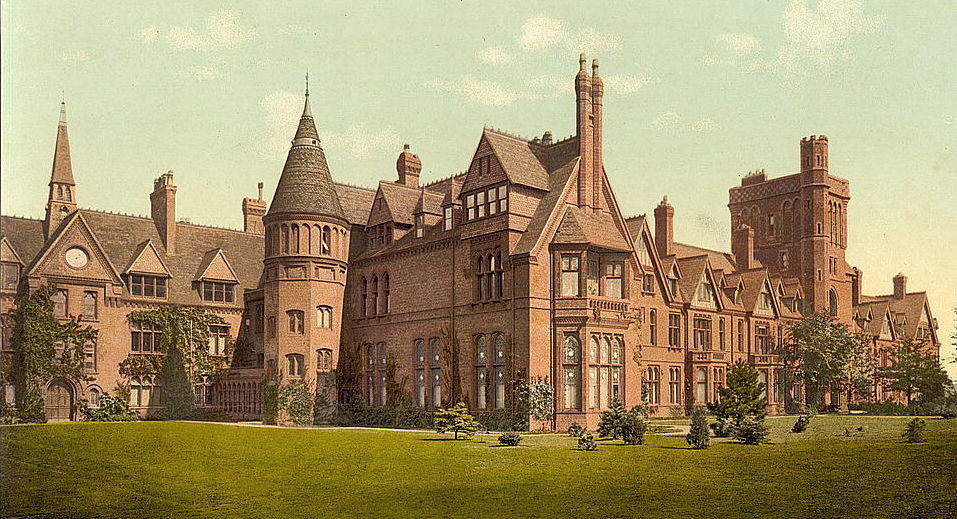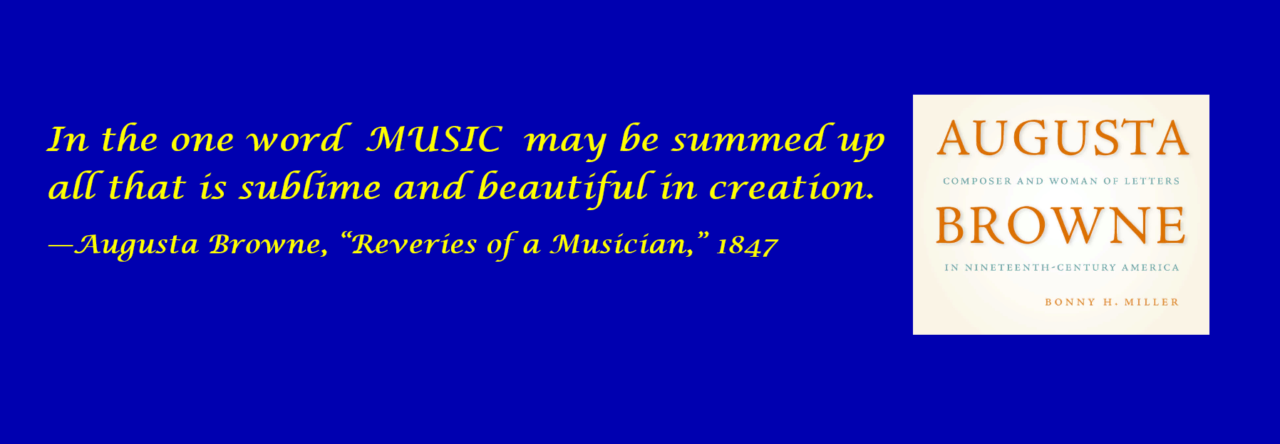Virginia Woolf wrote “A Room of One’s Own” to deliver in 1929 at Cambridge University for attendees of the two women’s colleges: Girton (est. 1869) and Newnham (est. 1871).

Woolf expanded the seven thousand-word essay into a monograph that remains a touchstone of the feminist movement. [see http://gutenberg.net.au/ebooks02/0200791.txt]. Her argument asserted that “a woman must have money and a room of her own if she is to write fiction.” The formula was much the same for a nineteenth-century female author, i.e., a woman needed to find money (have it, get it, or earn it) and a room of her own to enable her to write.
To paraphrase Virginia Woolf, American composer and author Augusta Browne (ca. 1820–82) did have a room of her own, although—like Emily Dickinson (1830–86)—it was in her parents’ residence.
